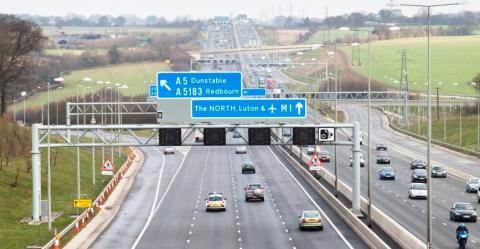Image Source: osce
Last week I briefly talked about how Guiding Principles and Governance work hand-in-hand to keep Enterprise Architecture on the right course. Guiding Principles act as the guideposts that point us in the right direction at the time of a decision, and Governance acts as our absolute boundary within which we can effectively operate. But what exactly does that mean? Let’s examine the below photo as an example.
Image Source: Road Signs Direct
The analogy between Guiding Principles and guideposts in this case is illustrated by the road signs on the highway. Let’s imagine that my destination is the airport and I am unfamiliar with this area. I know I was supposed to drive on this highway to get to the airport and when I reach this decision point, the sign points me in the right direction. Simple enough. But how is the concept of Governance illustrated by this same picture?
According to The Open Group, “Governance is essentially about ensuring that business is conducted properly (TOGAF Definitions)”. With that in mind, when we re-examine the above photo, there are underlying rules that are in action.
- The drivers stay within a particular lane.
- Everyone on their respective sides of the road is heading the same direction.
- Everyone is driving roughly at the same speed (we hope).
- The drivers stay within the physical boundaries of the highway. There are physical obstructions in place to help reinforce the boundaries.
- Even though it is unseen, it is safe to assume that most, if not all, of the drivers are licensed and insured.
- And most importantly, the vehicles are on the left side of the road!
These rules are dictated by whichever body has authority over that particular section of road. All the rules are in place not only for everyone’s safety, but also to provide the most optimal driving expereince. As soon as one individual driver ignores the rules, for whatever reason (good or bad), all drivers on the highway can be negatively impacted. Hopefully, none of us have had to deal with the experience of someone driving the wrong way on the road, but I can imagine the potential devastation that could happen. By simply having a set of rules that establish boundaries, an optimal environment can be created in which each member can be the most effective. The last example listed above was specifically put there to point out that different environments can have similar or different rules. For the most part, driving in the USA is the same as driving in the UK, with the major exception of which side of the road you drive on. This fundamental difference can have a major impact. Maybe even literally..!!!
References:
TOGAF Definitions – http://pubs.opengroup.org/architecture/togaf8-doc/arch/chap26.html


#1 by Teresa Mims on November 13, 2016 - 3:01 pm
Bob,
I really like the road sign analogy. After all this time of talking about and developing roadmaps, it hadn’t occurred to me to use a photo of road signs to explain governance. Forest for the trees problem. I will definitely incorporate this into briefings because everyone will understand it – especially with our DC traffic issues.
#2 by Bob on November 13, 2016 - 4:26 pm
Thanks. It’s been helpful for my own understanding to have good analogies to be able to link to the EA concepts.